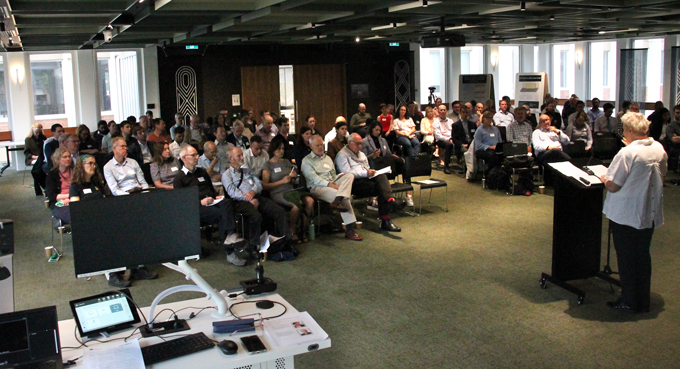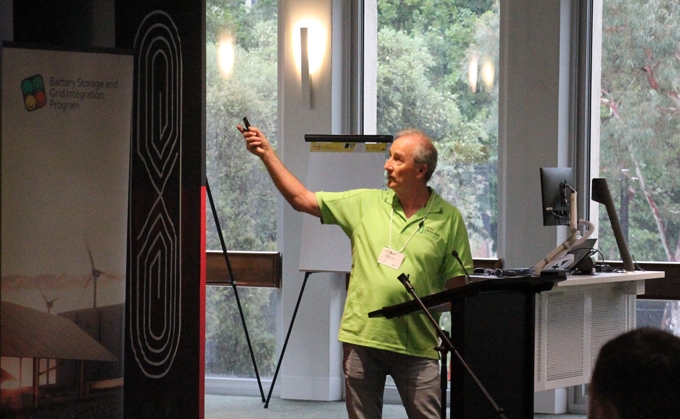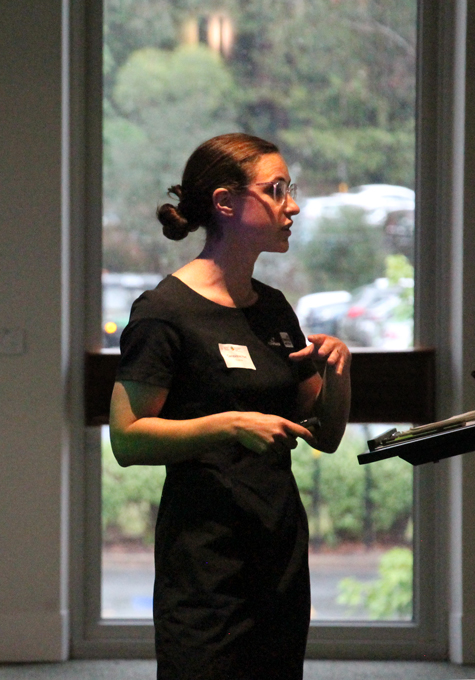
4 December 2023
Leaders in the field of renewable energy travelled from across Australia to the Australian National University (ANU) to share the latest developments in neighbourhood battery research and progress updates on government-funded trials at the second ANU Future of Neighbourhood Batteries Conference, hosted by the Battery Storage and Grid Integration Program (BSGIP).

The shift to renewables is being driven by the retirement of coal generation plants, explained keynote speaker Dr Kerry Schott AO, Chair of the Carbon Market Institute and AGL Board Member.
“Under current plans, which are not particularly aggressive, 62% of the coal fleet will be gone by 2033 and it could well turn out being higher,” she said.
Dr Schott said that the aim is to achieve stability in electrical grids with 75% of energy coming from renewables.
“And what we’ve seen this September is that we are already, for short periods, approaching that level,” she said. “About half of it was from large scale wind and solar, but the other half was from household and small business PV [photovoltaic solar panels generating electricity from sunlight].”
Dr Schott listed some of the obstacles that must be overcome, including the limited reliability of forecasts for wind resources, and insufficient consumer uptake of solar energy and battery storage for that energy.

“The transition to renewable energy in Australia, as we electrify homes in our suburbs, we will need a lot of energy storage,” said Dr Marnie Shaw, a Research Leader at BSGIP, who chaired the conference. “Most of that energy storage will be battery storage, and of that battery storage, more than half is expected to be in our homes and in our suburbs.”
The conference included presentations on various neighbourhood battery trials across Australia along with a presentation on the technical aspects of operating a neighbourhood battery. Social science researcher from the Battery Storage and Grid Integration Program, Dr Wendy Russell spoke about the social dimensions of neighbourhood batteries and posited that neighbourhood batteries are a catalyst enabling energy system redesign, and a rethink of what resilience in communities means.

The conference also included a workshop session whereby participants imagined they were in the year 2040 and neighbourhood batteries had catalysed a remarkable shift towards a much better energy system. The question that breakout groups were tasked with answering was – ‘What happened in 2024 to set us up on that path?’.
The concluding session for the day was a panel session that saw representatives from Federal and state governments, a local council, and the Australian Energy Regulator provide their perspective on the future of neighbourhood batteries.
Dr Shaw said that as neighbourhood batteries move from a theoretical phase into an implementation phase, it is yet unclear whether home owners will embrace the integration of government-funded household batteries into the grid, or whether the trials that are underway will be expanded upon.
“But we do know the enthusiasm for neighbourhood batteries is continuing to grow, as we see from this conference, which is I think about double the size from last year.”
Find out more about the Future of Neighbourhood Batteries in Australia conference here.
